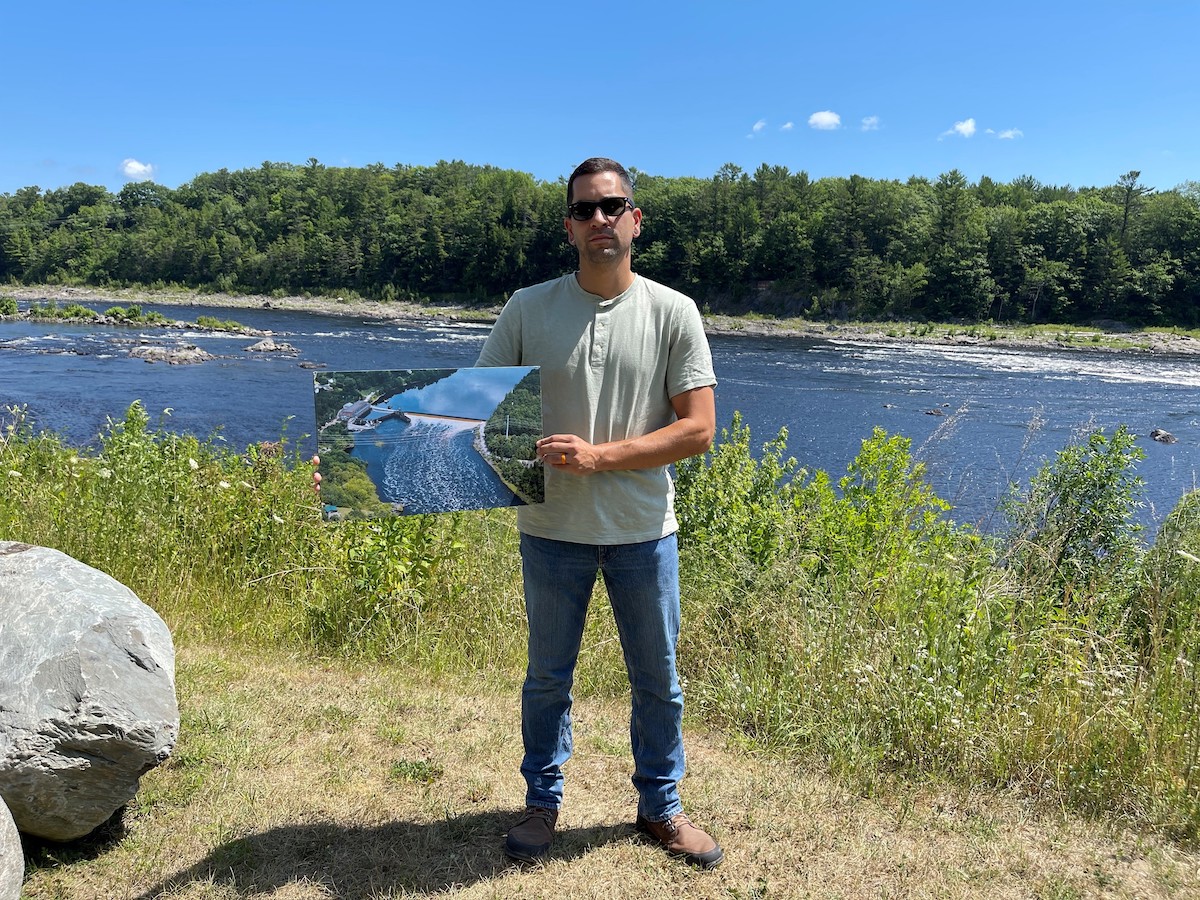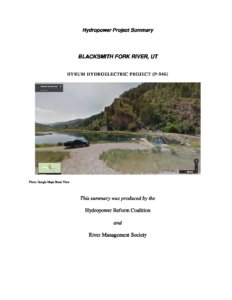The Fate of a Dam in Cherokee
![Ela Dam_Oconaluftee River_Erin McCombs[28] Ela Dam, Oconaluftee River | Photo by Erin McCombs](https://hydroreform.org/wp-content/uploads/2023/01/Ela-Dam_Oconaluftee-River_Erin-McCombs28-3-1024x768-1.png)
Ela Dam, Oconaluftee River | Photo by Erin McCombs
Joey Owle’s quest to remove a dam, secure the future of native species, and restore Long Man
The cicadas drone as Joey and I chat over coffees on a gorgeous late-summer morning along the Oconaluftee River in Cherokee, North Carolina. A few leaves on the trees are starting to turn yellow and spiral their way down to the river as the water whooshes downstream.

Joey Ole, an enrolled member of the Eastern Band of Cherokee Indians
Joey, an enrolled member of the Eastern Band of Cherokee Indians, is tall and energetic, and he uses his hands when he’s talking about something he’s excited about — like removing the Ela Dam from the Oconaluftee. Joey is also the Secretary of Agriculture and Natural Resources for the Tribe. And he’s not reluctant to pick up the phone and ask the owner of a hydropower dam if they would like to discuss dam removal. But more about that in a minute.
Joey grew up on the Qualla Boundary, a small part of the historic Cherokee territory, which once sprawled from eastern Tennessee across western South Carolina, northern Georgia, Kentucky, western North Carolina, and Alabama. Both his parents worked for the Tribe. He left Cherokee to get his education and returned, first as an intern in the Natural Resources department, then after graduate school, as the appointed Secretary.
“Growing up in this community, I was always playing in the river. That’s my earliest memories, 5-years-old, going to the river, swimming, being there all day, ‘cause there wasn’t a lot going on. We didn’t have a lot of money, so you went a played in the river all day. Make it a family affair, friends, cousins. Growing up, that was expected during the summer.”
The Ela dam separates the Oconaluftee River from the rest of the Tuckasegee watershed and has since 1925 — almost 100 years. Because of this one dam, the entire Qualla Boundary and parts of Great Smoky Mountain National Park are entirely blocked off from their historic drainage.
The dam represents what Tommy Cabe, Eastern Band of Cherokee Indians’ Tribal Forest Resource Specialist, calls “a thorn in the leg of Long Man.” The Cherokees have always viewed the river as “Long Man (Ga-na-hi-da A-sga-ya),” whose head lies in the mountains and whose feet lie in the sea. Long Man is a sacred figure who provides water to drink, cleanliness, food, and numerous cultural rituals tied to medicine and washing away bad thoughts and sadness.
For example, sicklefin redhorse, a fish only recently known to Western science, have long been a staple in the diet and culture of the Cherokees. For almost 100 years, this fish has not been able to reach the Qualla Boundary because of the dam. This fish is regionally migratory and runs up rivers like the Oconaluftee River to spawn. Without access to upriver spawning habitat, this unique Southeastern species will die out.
With biodiversity loss increasing, especially in aquatic systems, restoring access to free-flowing rivers is more important now than ever. The more habitat available, the better chance freshwater species like sicklefin redhorse and the federally endangered Appalachian elktoe mussel (Alasmidonta marginata) have of adapting to changes in their habitat brought on by climate change.
After an accident that released sediment from Ela dam that smothered the river life downstream of the dam, Joey kept coming back to the same question: “What if we could remove this dam?” For the nearly 10 years of the Eastern Band of Cherokee Indians’ and American Rivers’ partnership, Joey, Mike LaVoie, Dr. Caleb Hickman, and I have joked about how cool it would be to remove the Ela dam and reconnect 500 miles of natural habitat. But we didn’t really think it was feasible … until Joey picked up the phone and called the dam’s owner, Northbrook Hydro.
Immediately I told him, “American Rivers is with you 100 percent on this project. Whatever you need, we’re here.”

Joey at Penobscot River Restoration in July 2022
After Northbrook Hydro was on board to explore removal, Joey submitted a resolution to Tribal Council to empower him and his department to develop a coalition to remove Ela dam. The coalition, which includes a laundry list of state, federal, and nonprofit partners, continues to meet biweekly since the Tribal Council passed the resolution in February 2022.
The project to remove Ela dam is still in the early stages and requires several more hurdles before removal can happen, including that the Federal Energy Regulatory Commission surrender the hydropower license, then design, permitting, and finally demolition. And many partners are essential in moving the project forward: Mainspring Conservation Trust is leading on the land-acquisition, American Rivers will manage the actual dam removal, and the Eastern Band of Cherokee Indians is leading the coalition with sheer will and determination. Big credit to Northbrook Hydro for entertaining a once-outlandish idea.
“My value around water comes from my dad working in wastewater for 16 years. We all flush the toilet every day and don’t think twice about it. All that waste has to be dealt with, that water is separated out to put back in the river as good a quality. Those are things I learned early on and have been reflecting on since working on this project with y’all. I can’t say I was a river advocate growing up, but I knew I wanted a clean river.”
Now, under Joey’s leadership, the entire Oconaluftee River, the lifeblood of the Cherokees, will be reconnected once more.
“Removal of this dam only starts to restore parts of our cultural identity.” Joey smiles and says, “What’s the next big one?”
The post The Fate of a Dam in Cherokee appeared first on American Rivers.


